As decided in the latest poll, the theme of this post is ‘dark tourism and cars’. It won by two votes ahead of ‘dark tourism and clothes’, so that will be entered again in the next poll. And since several people said that their second choice (and close contender) was ‘dark tourism and spheres’ I’ll give that another chance next time too. NPPs will have to wait a little longer, but as that is one of my personal favourites it is bound to pop up at some point as well (whether in another poll or independently I can’t say yet).
But now to cars. Searching through my archives I found quite a few images of cars, of varying degrees of darkness (and of course many more of none at all). One of the most historically significant events involved this car:
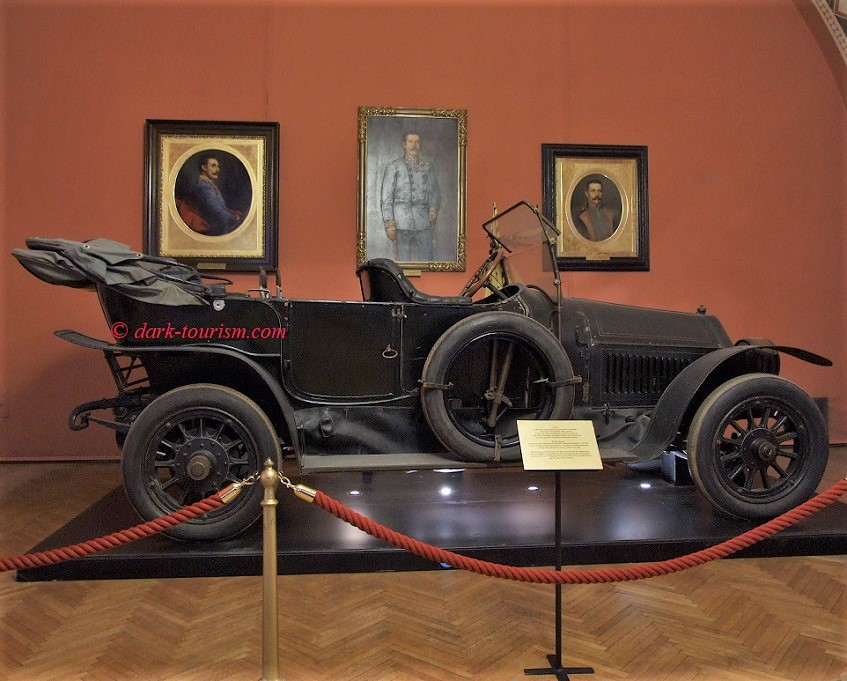
This is the original car in which Archduke Franz Ferdinand, heir to the throne of the Austro–Hungarian Empire, was driven around Sarajevo in, the Bosnian capital (then part of the empire) on 28 June 1914. Sitting on the back seat he and his wife were shot dead by Gavrilo Princip – an event that is widely regarded as having triggered the outbreak of World War One. The car is now on display in the Military History Museum in Vienna. You can clearly see a bullet hole in the back door on the right-hand side of the car. That’s from the second shot fired by the assassin which hit Sophie in the abdomen, after the first shot had hit the Archduke’s neck. Both died soon after. Also on display is the bloodied uniform of Franz Ferdinand with the hole in the neck torn by the first bullet also clearly visible.
This next car got caught up in a much later war but in the same region, namely during the Yugoslav wars of the 1990s:
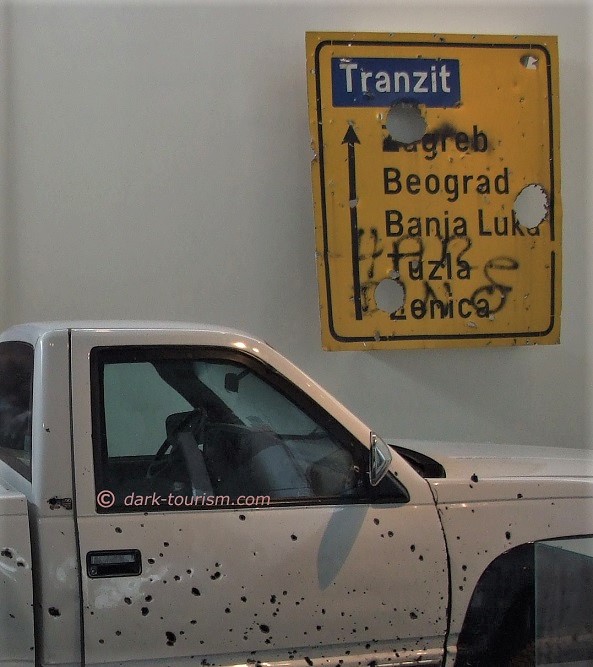
As you can see, the car has been positively perforated by bullets, as has the street sign in the background. Both are on display at the Newseum in Washington D.C., a large modern museum about journalism and the media; these displays were in the section highlighting the dangers of war reporting …
And here’s another car riddled with bullet holes:
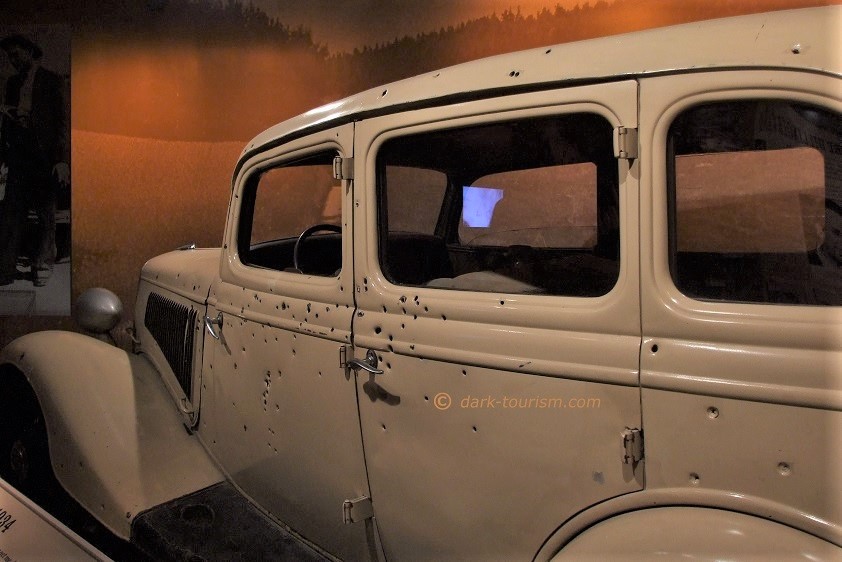
This is actually a film prop, not the real thing, used in a movie about the infamous gangster couple Bonnie and Clyde who were killed in a police ambush in 1934. This bullet-hole riddled prop car featured in the 1967 movie Bonnie and Clyde by Arthur Penn. It was later displayed at the Museum of Crime and Punishment in Washington D.C., but sadly that museum closed down a few years back. What happened to the car I do not know.
Another car involved in an ambush and assassination is this one:
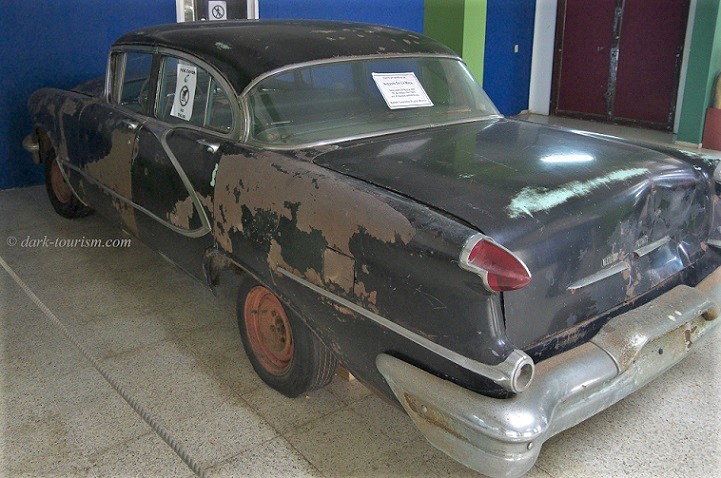
This is the car used by the assassins of the Dominican Republic’s dictator of over 30 years, Rafael Trujillo, in May 1961. They had ambushed the tyrant’s car and opened fire, eventually shooting him dead; afterwards they used this car’s boot (trunk) to take Trujillo’s corpse away from the scene. The car is nominally on display at the Museo Nacional de Historia y Geografía in the capital Santo Domingo; the museum hadn’t been open in years when I was there but I got a good glimpse of the car with the help of a local fixer.
The next car represents an unsuccessful assassination attempt:
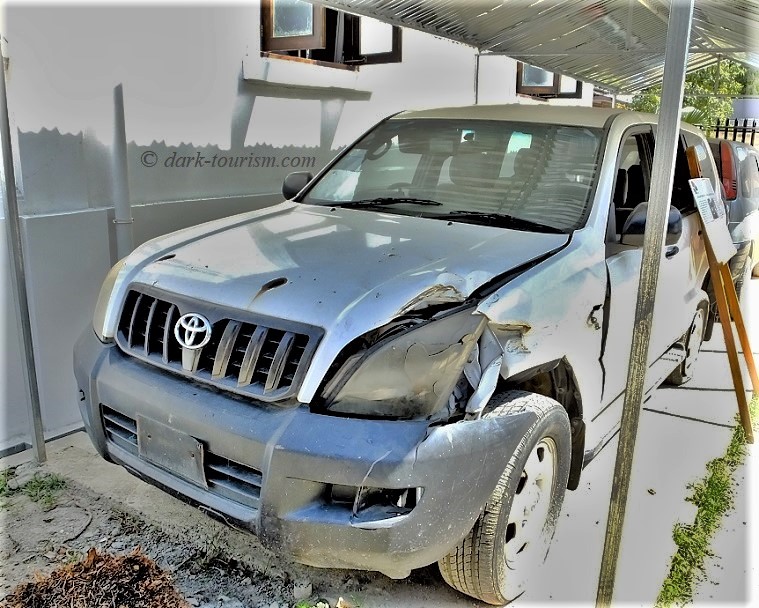
In this car, then prime minister of East Timor and Timorese Resistance icon Xanana Gusmão narrowly survived an attack by some renegade soldiers at a time when the newly-achieved independence and democracy in that troubled little country were in an unstable phase. It is now on display next to the Xanana Reading Room in the capital Dili.
Next another car spotted in East Timor:
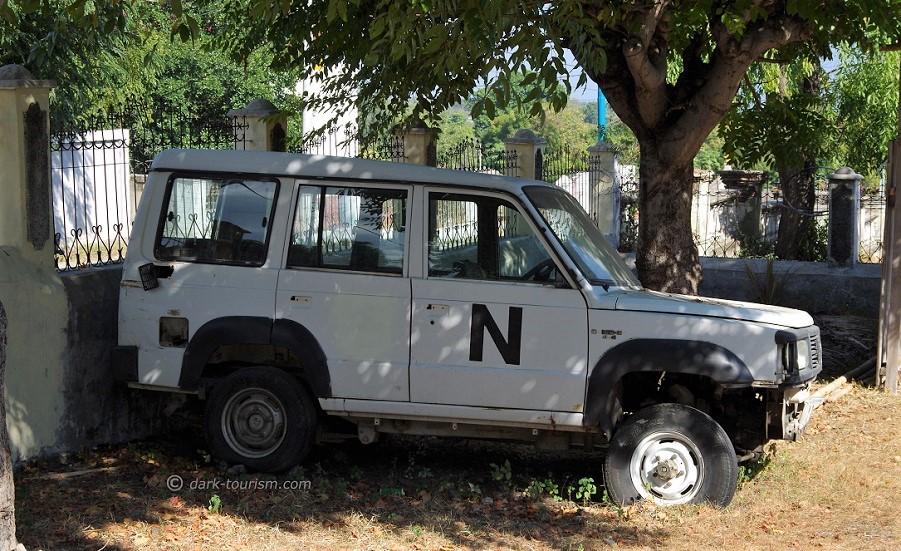
This is obviously a car from the UN mission in East Timor in 1999 which helped end the long years of brutal Indonesian occupation and repression of the local population that had begun almost immediately after East Timor declared itself independent at the end of the Portuguese colonial period. The UN, especially troops from Australia, did manage to secure a free referendum for the country’s transition to proper independence and kicked the Indonesian occupiers out. This left-behind UN jeep, clearly no longer needed or wanted, I found in the garden of a former colonial mansion in the coastal town of Liquica, with one wheel off and the “U” of the “UN” marking missing.
Rather more intact, but also abandoned are these cars:
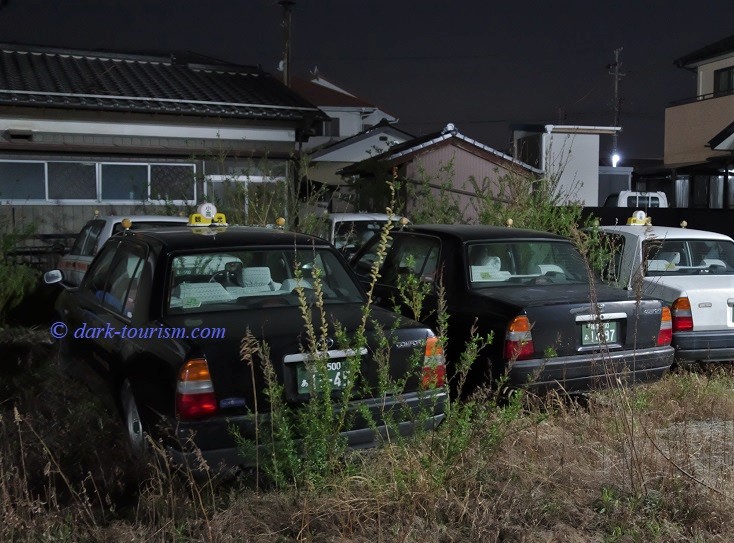
These parked taxis in Japan are slowly being engulfed by grass and bushes, after years of standing abandoned. Why were they abandoned? Well, this is Odaka in the Fukushima Prefecture of Japan, which was hit by the triple disaster – earthquake, tsunami, nuclear contamination – of 11 March 2011. Odaka has meanwhile been declared safe again, and a few residents have indeed returned, but clearly the demand for taxis must be so low that nobody’s bothered with these cars again.
A single abandoned – and badly damaged – car I spotted by the side of a road in the mountains of Norway:
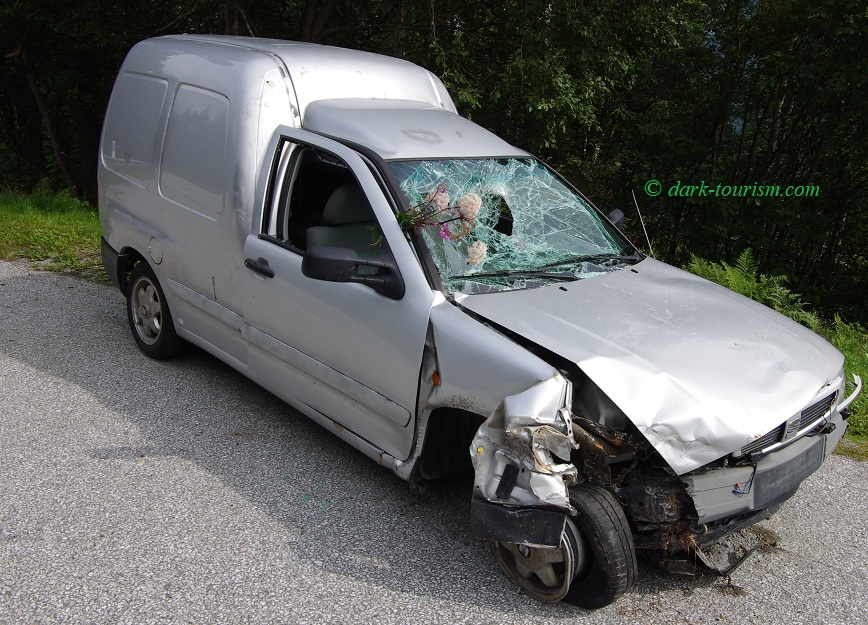
It just stood there at one of the switchbacks on a mountain pass in the interior that I was driving along during my comprehensive 2012 Norway trip. There were skid marks and coloured lines (left by the police, I presume) on the tarmac, but the car was still there – silent and empty. I stopped and had a look. Peeking in I saw this:
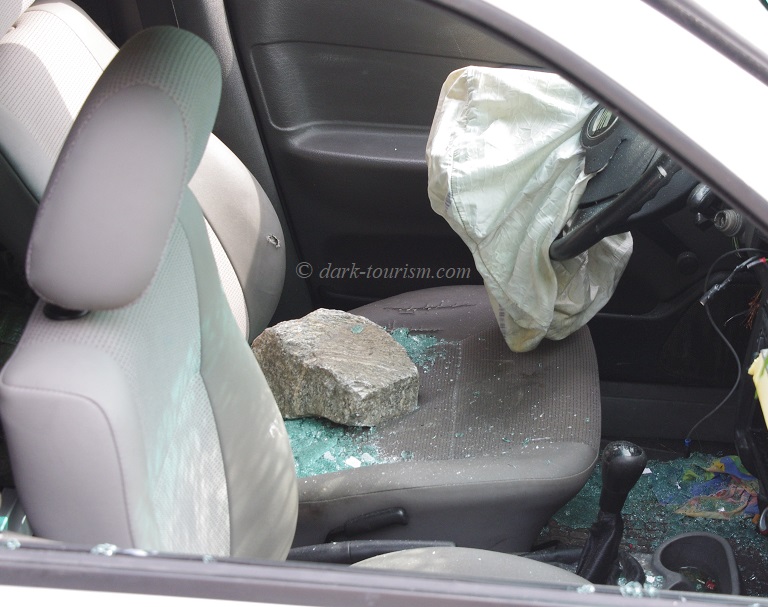
This looked scary – could it be that it was this rock that smashed through the windscreen? And if so, what happened to the driver? Did he or she survive? I hope so, as there were no visible traces of any blood on the seats or the smashed glass.
This brings me to the next car:

This car I spotted on the road in Senegal, West Africa, and the cargo on the roof is clearly not intended for the living. I know that family ties are close and very important in this country, but so much so that they cart their deceased family members around with them? Or maybe the coffin was empty and was just being transported to where it would be used? Anyway, it was a rather unusual thing to behold, and another clear link between the topics of death and cars.
However, the remainder of the cars featured here are free from such links (mostly). OK, the proud former owner of this one has been dead since 1980, but the car played no role in his demise:
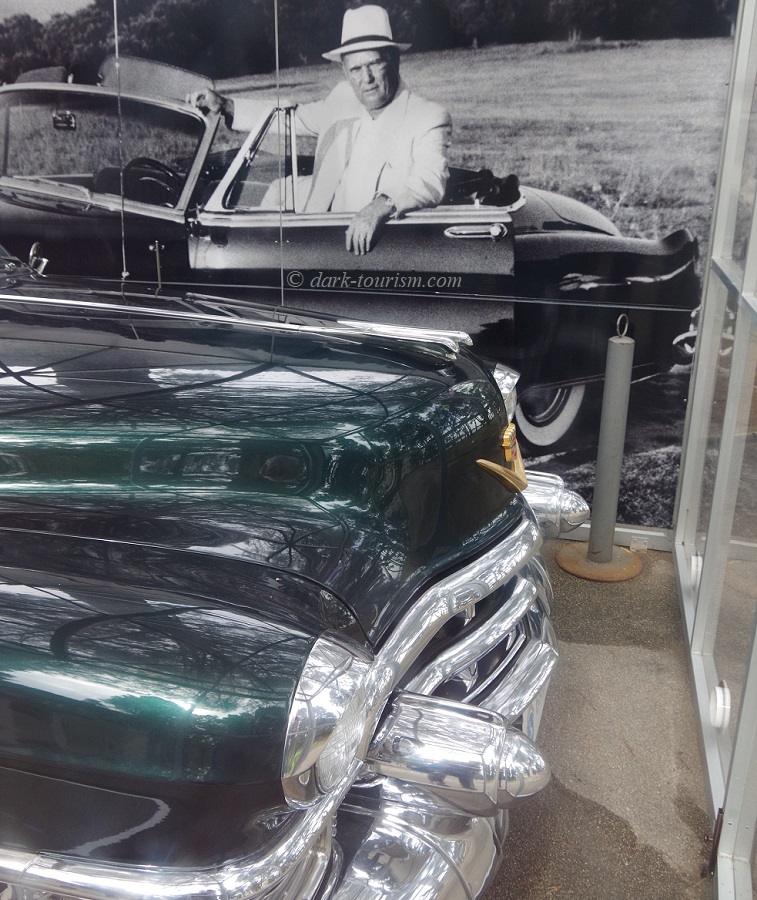
You may have recognized the man in the photo in the back: that’s Josip Broz Tito, leader of Yugoslavia from towards the end of WWII to his demise in 1980. He used it to drive guests and dignitaries – or just cruising by himself – around his private island Brioni in the Croatian Adriatic. The island is now open to the public, and there’s a Tito museum. His old car is on display in a glass case just outside the building.
Going back in time a bit more, here’s another communist leader’s car:
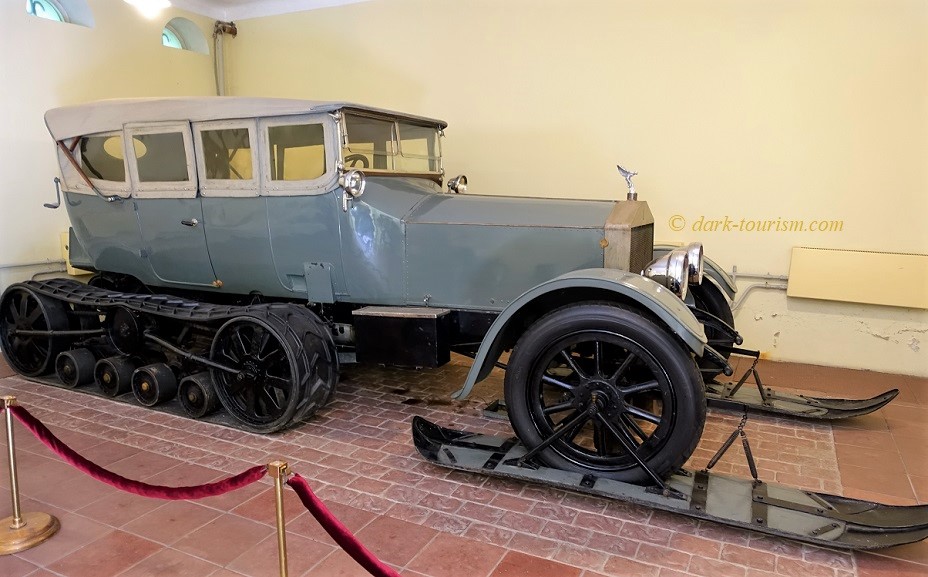
This vintage Rolls Royce was specially adapted and fitted with skis and snow caterpillars for the use by Vladimir Ilych Lenin, the leader of the Russian revolution in 1917, for commuting even in adverse weather from his country seat at Gorky Leninskiye to Moscow and back. This mansion is also where Lenin died (and was first embalmed) in 1924. The site was then turned into a pilgrimage shrine to Lenin and it is still there. Lenin’s car is on display in an adjacent garage. It looks like it could still be used.
The same cannot be said about this vehicle of a similar vintage:
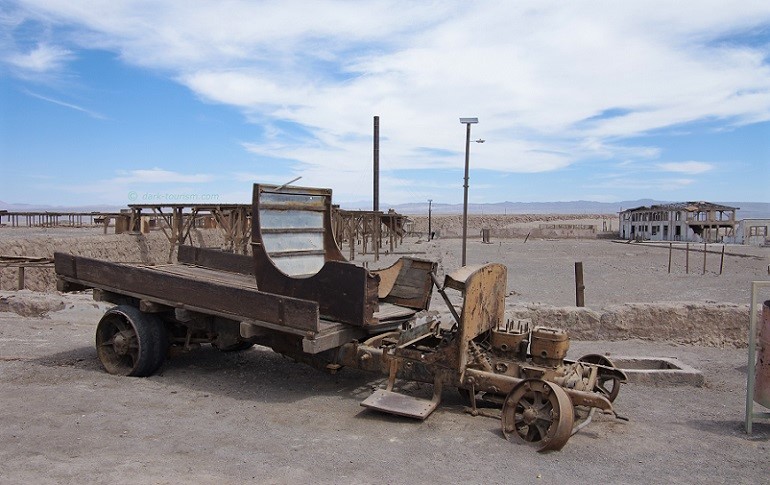
This fantastically, almost endearingly, dilapidated and rusty car wreck I saw at the fabulous ghost town of Chacabuco in the middle of the Atacama Desert in Chile. Chacabuco was one of the region’s nitrate, or saltpetre, mining towns. This was the country’s key industry in the late 19th and early 20th centuries. Nitrate mined and refined here was a vital fertilizer exported globally, but with the advent of synthetic fertilizers, the industry crumbled and by the 1940s was basically finished. Chacabuco was finally abandoned in 1945. Apart from being an atmospheric ghost town in the middle of nowhere today, another dark aspect makes it very relevant here: in the early phase of the dictatorship of General Pinochet, who came to power in a bloody coup in 1973, Chacabuco was used as a concentration camp for political prisoners!
This next car is far less associated with dark history and death, and is even seen by many (myself included) as an endearing relic today:
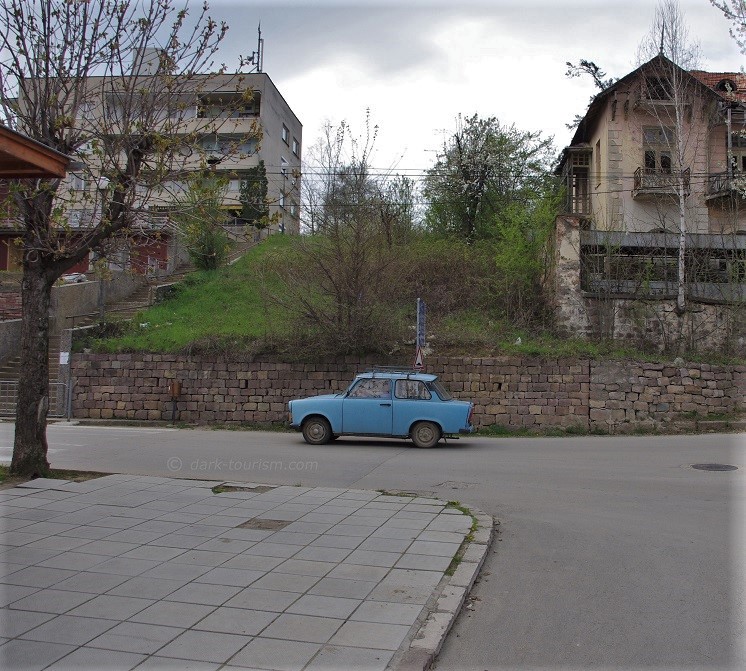
This street scene was photographed in the rural and sleepy town of Varshets in Bulgaria. A visit to the place and its abandoned spa and old communist cultural centre was part of my Communism Tour of Bulgaria, which featured quite a few time-travel-like elements. And as if on cue, this communist-era car put-putted by: That’s of course an East-German-built “Trabbi” (‘short for “Trabant”), the cheaper of the two passenger cars built in the GDR and made available to the general public – though they often had to wait up to 15 years for delivery. But once in the possession of a family, the little two-stroke-engined vehicle whose chassis was partly made of plastic, it was lovingly looked after and treated almost like a family member. That obviously changed quickly and dramatically after the Fall of the Berlin Wall and the collapse of the Eastern Bloc when Western cars flooded the eastern markets and the Trabbis were abandoned in en masse. But for some, including people in the West, this little relic of the GDR became a desirable collector’s item.
At the other end of the scale of cars constructed in communist countries at the time was this next one (same image as at the top of this post):
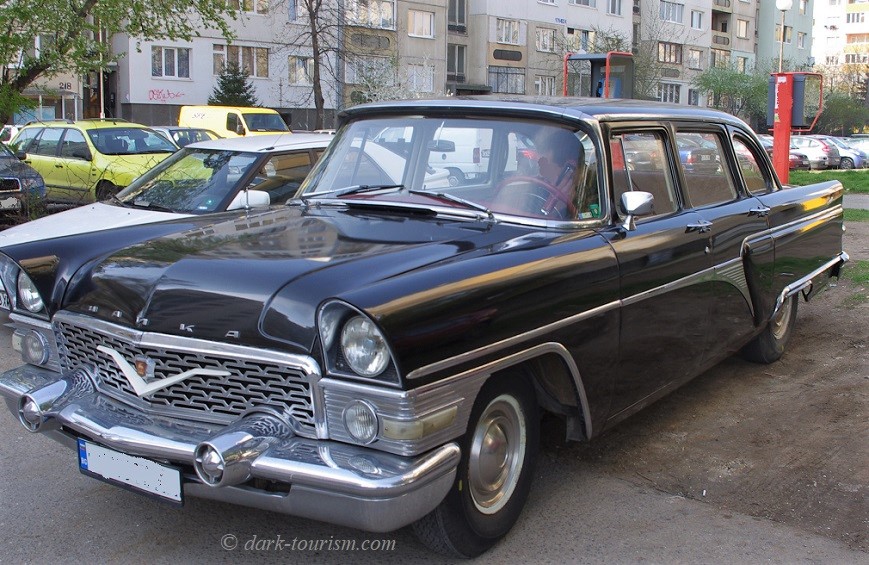
This is a “Chaika”, a luxury limousine built by the Russian vehicle manufacturer GAZ (produced from the late 1950s well into the 1980s, if only in small numbers). Obviously, these were not at all for common people and served as state coaches for members of the higher echelons of the communist regimes, both in the Soviet Union and in allied socialist “brother” countries, including, obviously, Bulgaria. On the first day of that Communism Tour of Bulgaria, this vintage model was actually used for driving us around the capital Sofia. For the rest of the tour, however, a more ordinary car was used, as these old Chaikas are terrible gas guzzlers (consuming over 30 litres per 100km, so I was told, or about ten times what a contemporary economy car burns), and hence expensive to run.
The final car featured in this post takes us back to the beginning, geographically, but to a different era:
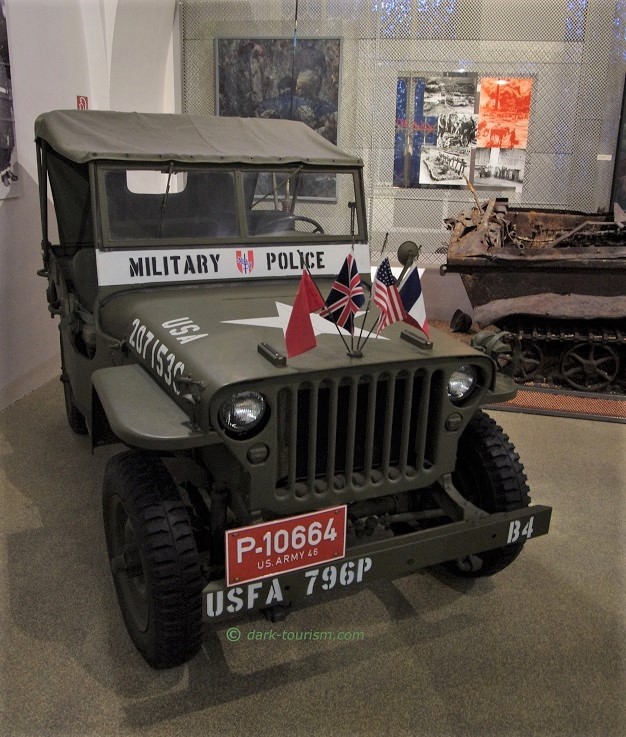
This American standard Jeep from WWII is, like Franz Ferdinand’s fateful car, on display at the Military History Museum in Vienna, Austria. It represents the immediate post-war era, though. Like Germany, Austria was also divided into four occupation zones by the Allies after their victory in the war, and, like Berlin, the capital Vienna was likewise divided into four sectors. The marked difference to Berlin was that the central First District of Vienna was administered by all four Allies jointly. Jeeps like this were used by the military police on patrols of the streets, and carried representatives of the Soviet Union, Britain, the USA and France (hence the four little flags at the front of the Jeep), which was naturally not always diplomatically easy. If you’ve seen the classic movie The Third Man, you may recall such cars featuring in it.
But that concludes today’s themed post. Let’s see when I can slot in the next theme poll …

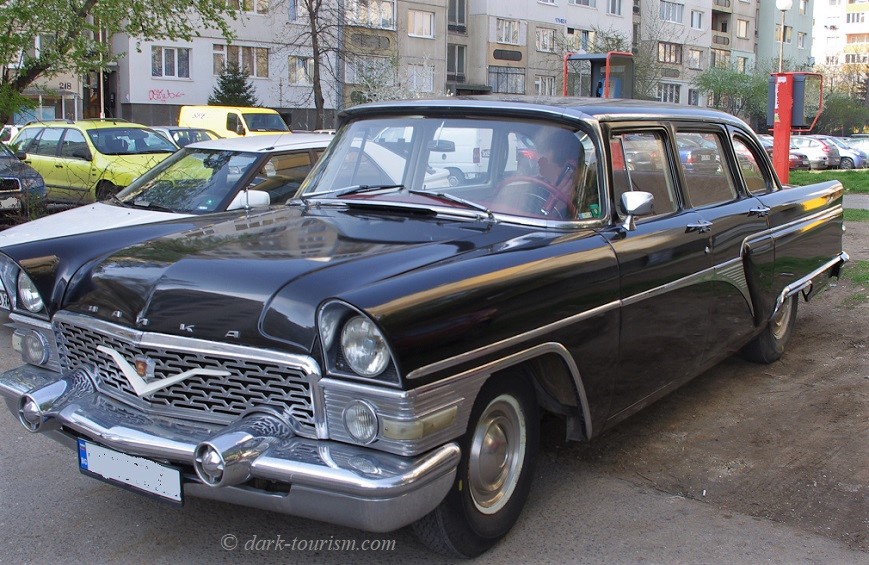



2 responses
The Franz Ferdinand car definitely deserves to be on top of this article.
I also add the car in which Abbas Al Musawi was killed by Israel’s targeted rocket. It’s in the village of Al-Nabi Shayth about 30 min from Baalbeck in the courtyard of the Shia Mausoleum dedicated to those who committed suicide bombing in the war.
http://www.amplecat.ro/2012/05/21/sa-merg-sau-nu-la-sanctuarul-lui-abbas-al-musawi-video/#more-4802
woah, that is definitely very dark, and controversial, of course. In fact, many more cars could have featured, not least JFK’s limo in which he was shot in 1963; it is now an exhibit in the Henry Ford Museum in Dearborn, Michigan, USA. I had intended to see this when I was last in the USA in 2015, but time ran out so I couldn’t fit it in. Otherwise it would definitely have been in this post too …